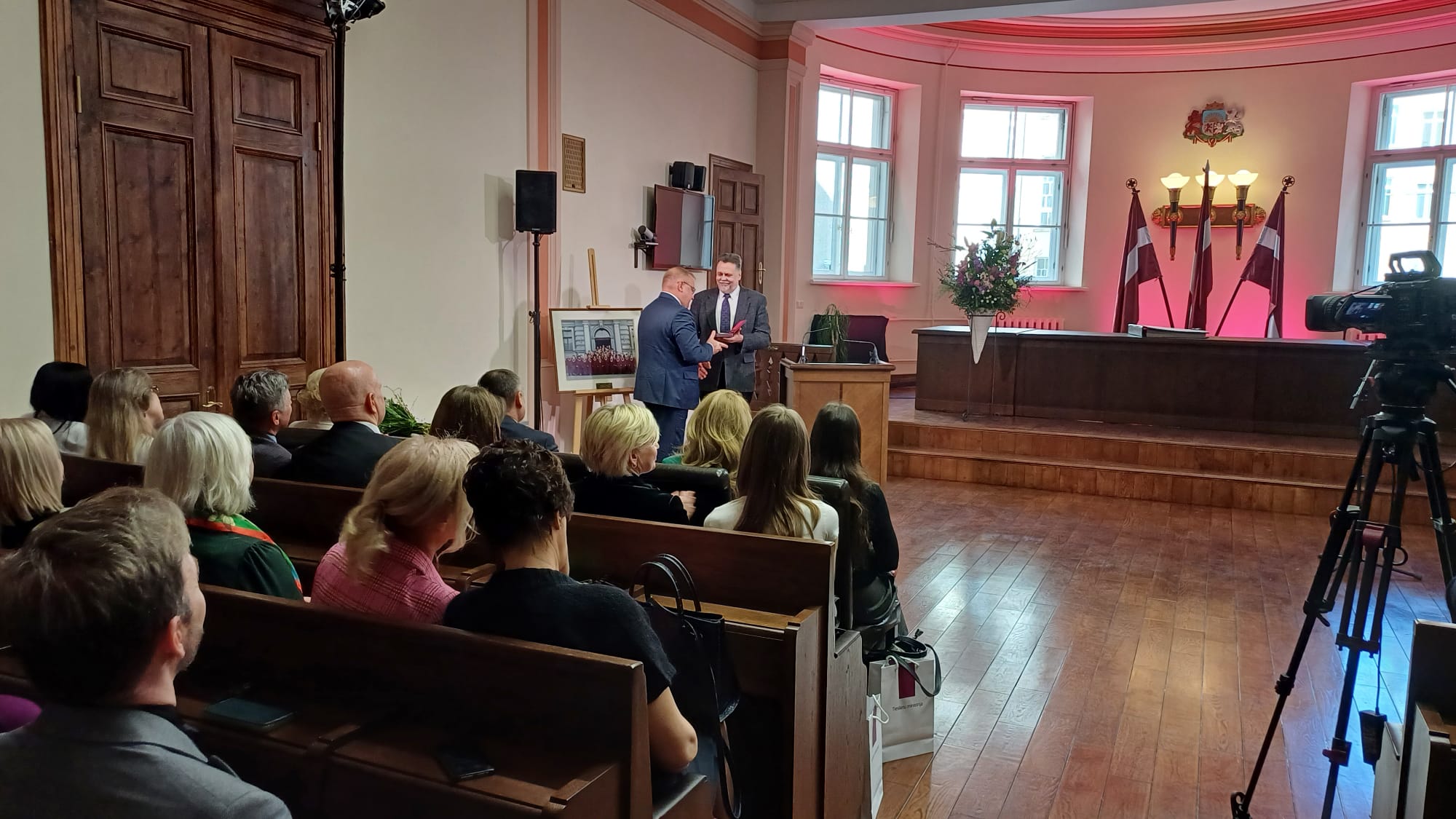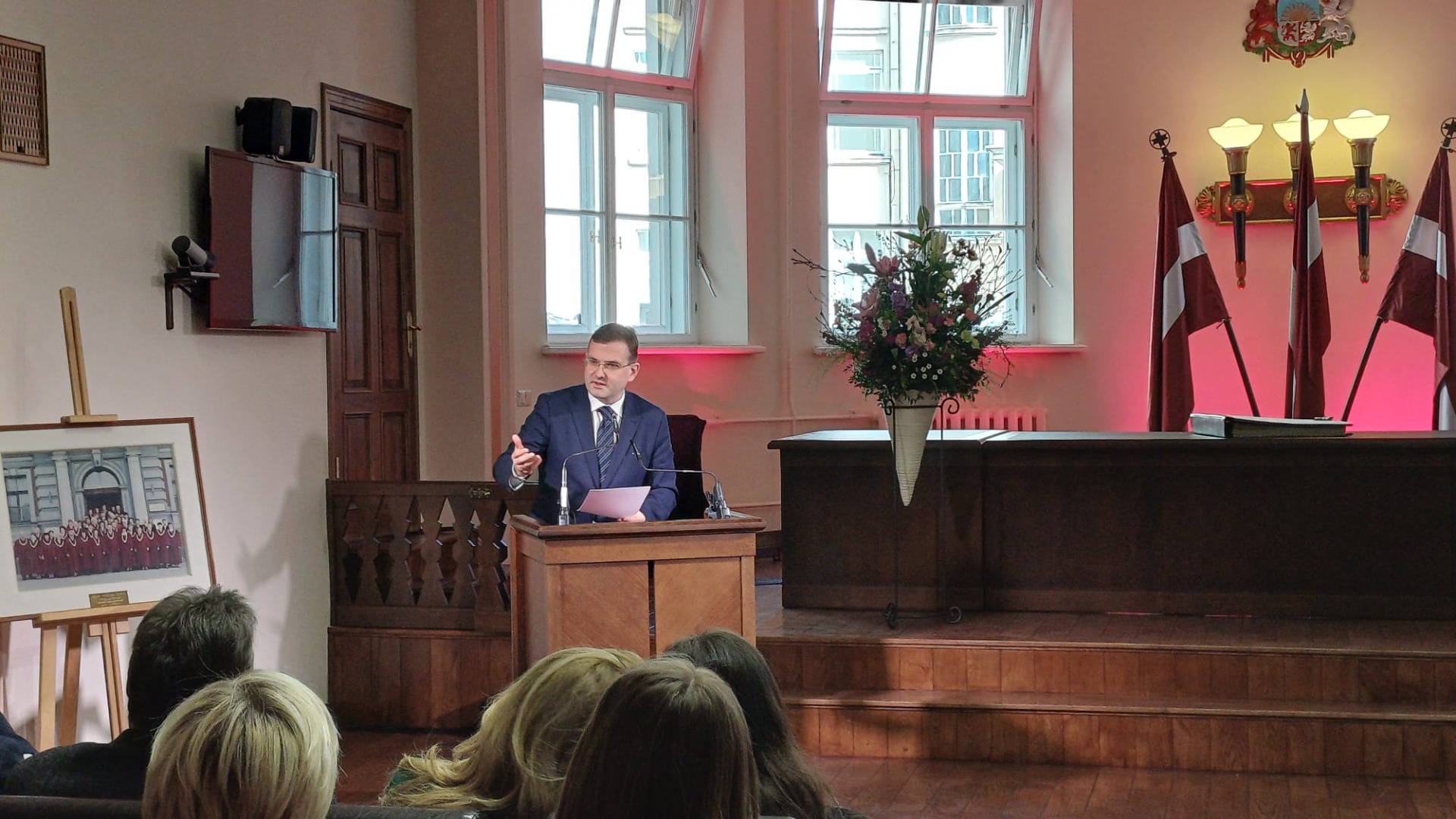Senate’s representatives point to restoration of regional courts as confirmation of state continuity
7 April, 2025
On behalf of the Senate, President of the Supreme Court Aigars Strupišs congratulates the President of the Riga Regional Court Māris Vīgants
On 4 April, congratulating the Riga Regional Court on the 30th anniversary of its restoration, the President of the Supreme Court Aigars Strupišs emphasised the significant role of the year 1995 for the Latvian judicial system, namely in March the regional courts were restored and in October the Senate and the Chambers of Courts resumed their work. The three-tier judicial system began to function, which was a necessary step on Latvia's path towards the European Union as a democratic country governed by the rule of law.
Aigars Strupišs reminded that Latvia did not have to build its judicial system from scratch after the restoration of independence, as it had the legacy of the first period of the free state of Latvia – both in terms of the structure of the judicial system and the court practice. As the President of the Supreme Court pointed out, regional courts were even in a relatively better situation than district courts and the Supreme Court, "Since there were no regional courts in the Soviet court system, they now had to be created anew, based solely on the legacy of the free state period, without bringing along any of the Soviet-era traditions and customary rights. This was a good opportunity to select the most progressive people to head the regional courts, and they in turn had the opportunity to build a completely new team of judges and to adapt new working methods and organisation of work in the courts. Whether the opportunity was used and whether it succeeded – we can now assess this within the distance of a generation of judges."
Whereas, Senator Janis Pleps gave a presentation on the re-establishment of regional courts in the context of the principle of state continuity.
The Senator stressed that the law “On Judicial Power” not only provided for a thorough judicial reform – the gradual restoration of the Senate, the Chambers of Courts and the regional courts, but also restored the philosophy of litigation and procedural thinking with the possibilities of appeal and cassation for the implementation of the right to a fair trial. This was not just a formal re-establishment of institutions, but a renewal of the understanding and procedural structure of the administration of justice. "The restoration of the judicial system was not just an amendment to the law or a technical change of names. It also required a renewal of legal thinking and legal culture, a recognition of past experience and building on it in one continuous axis of justice," said Janis Pleps.
The Senator emphasized that the constitutional system of state institutions, the state system, is one of the elements of the state with regard to which the continuity of the state must be ensured and clearly visible. The continuity of the state also set the framework for the organisation of the judiciary after the restoration of Latvia's independence. "The restoration of the regional courts and the appellate instance in general confirmed and visualized the continuity of the state, meaning that we were restoring the judicial system, not preserving the framework of the occupation period or building an entirely new one on foundations alien to the Latvian legal tradition," emphasised Jānis Pleps. It is right to realise that the history of the courts is not only part of the history of the Latvian legal system, but also an important part of the history of Latvia.
Information prepared by
Rasma Zvejniece, Head of the Division of Communication of the Supreme Court
E-mail: rasma.zvejniece@at.gov.lv, telephone: +371 67020396, +371 28652211
Photos by the Riga Regional Court



